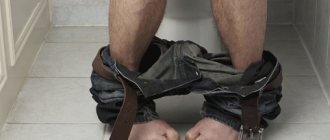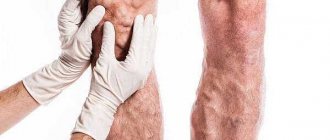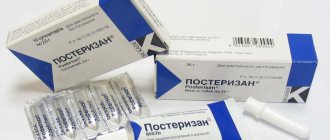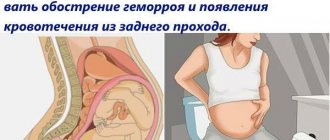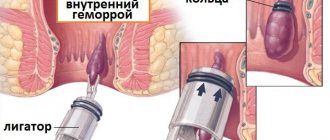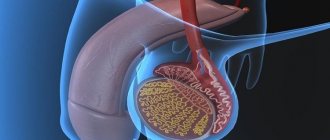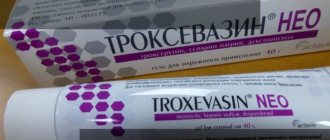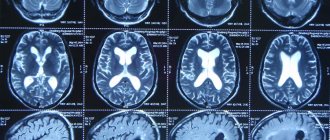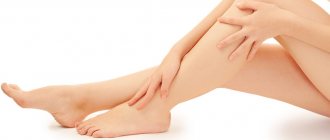February 28, 2020
According to the World Health Organization, hemorrhoids in various forms occur in almost 70% of the world's population
According to the World Health Organization, hemorrhoids in various forms occur in almost 70% of the world's population. This includes anyone who has ever experienced symptoms of this disease. Unfortunately, many people are embarrassed to see a doctor and self-medicate, because they believe that it is not customary to talk about such problems.
What are hemorrhoids?
The rectum is the final point of the human digestive system, and therefore plays a very important role. It is surrounded by a double - external and internal, hemorrhoidal plexus of veins, which ensures a hermetic closure of the anus.
If the blood flows in too much or flows out too slowly, blood stagnation forms in the veins. As a result, the vessels swell, forming hemorrhoids (they are also often called lumps). This causes pain, a sensation of a foreign object in the anus.
Under the influence of constant pressure from large accumulations of blood, the walls of the veins become thinner and collapse. Bleeding occurs, particles of feces and other contaminants get inside the vessels, which leads to the formation of a focus of inflammation. As a result, the pain becomes simply unbearable, the person can neither sit nor lie down, and is afraid to go to the toilet.
Sources
- Shaikh MY., Yasmin F., Ochani RK., Shah SMI. Influenza swine flu virus: A candidate for the next pandemic? // J Glob Health - 2021 - Vol11 - NNULL - p.03011; PMID:33643621
- Carvalho TA., Lima TM., Melani VF., Mendes MF., Pereira LR., Marson FAL. The scientific production during 2009 swine flu pandemic and 2019/2020 COVID-19 pandemic. // Pulmonology - 2021 - Vol26 - N6 - p.340-345; PMID:32800782
- Galav V. Behavioral Patterns of Visitors Attending the Respiratory Diseases and Swine Flu OPD in Relation to Droplet Borne Infection: A Prospective Observational Study. // J Assoc Physicians India - 2021 - Vol68 - N1 - p.83; PMID:31979804
- Dyer C. Case settled in Irish student who developed narcolepsy after swine flu vaccine. // BMJ - 2021 - Vol367 - NNULL - p.l6658; PMID:31757890
- Hasan F., Jamal A., Asad A., Hasan CA. Management of Swine Flu: New Approaches - Letter To Editor. // J Pak Med Assoc - 2021 - Vol69 - N4 - p.607; PMID:31000879
- Ravina H., Mohan PS., Gill A., Kumar. Hemagglutinin gene based biosensor for early detection of swine flu (H1N1) infection in human. // Int J Biol Macromol - 2021 - Vol130 - NNULL - p.720-726; PMID:30822474
- Verma R., Chayal V., Kumar R., Bhalla K., Dhankar M., Dhaka R., Agrawal G. Community perception about swine flu in an urban swine of Haryana: A cross-sectional study. // J Family Med Prim Care - 2020 - Vol7 - N6 - p.1515-1520; PMID:30613552
- Kshatriya RM., Khara NV., Ganjiwale J., Lote SD., Patel SN., Paliwal RP. Lessons learned from the Indian H1N1 (swine flu) epidemic: Predictors of outcome based on epidemiological and clinical profile. // J Family Med Prim Care - 2021 - Vol7 - N6 - p.1506-1509; PMID:30613550
- Hung KKC., Mark CKM., Yeung MPS., Chan EYY., Graham CA. The role of the hotel industry in the response to emerging epidemics: a case study of SARS in 2003 and H1N1 swine flu in 2009 in Hong Kong. // Global Health - 2021 - Vol14 - N1 - p.117; PMID:30482214
- Wang LB., Chen QY., Wu XM., Che YL., Wang CY., Chen RJ., Zhou LJ. Isolation of a Reassortant H1N2 Swine Flu Strain of Type “Swine-Human-Avian” and Its Genetic Variability Analysis. // Biomed Res Int - 2021 - Vol2018 - NNULL - p.1096079; PMID:30003086
Symptoms of hemorrhoids
The disease progresses gradually over several years. The key to successful treatment is contacting a proctologist as soon as you notice the first symptoms of hemorrhoids.
All stages of the disease are characterized by the following symptoms:
- discomfort in the anus;
- pain during bowel movements;
- anal bleeding;
- traces of bright scarlet blood on linen, toilet paper, toilet;
- mucous or watery discharge;
- the formation of hemorrhoidal cones, their gradual increase in size.
In the initial form of the disease, there is a slight enlargement of the veins, but the person usually does not notice it. The only thing that indicates hemorrhoids is traces of bright scarlet blood on toilet paper after visiting the toilet. This is already a serious reason to consult a doctor, since bleeding may be a sign of a malignant tumor in the intestines.
When hemorrhoids enter the second stage, a person from time to time feels pain during bowel movements, itching, burning in the anus, and it seems to him that there is a foreign object inside. Hemorrhoidal cones sometimes fall out, but are easily adjusted by the patient on their own.
In the third stage, the symptoms described above intensify. Venous lumps increase significantly, narrowing the lumen of the anus and making defecation difficult. When visiting the toilet, a person experiences severe pain and bleeding often begins.
As the disease progresses to the fourth stage, the hemorrhoids enlarge so much that they cannot be moved inward by hand. The pain is very severe, each bowel movement is accompanied by bleeding. Blood clots – thrombi – form in the veins.
Hemorrhoids develop in two forms - external and internal. In the first case, the lumps are located close to the anus, so they often rupture and bleed during bowel movements. The pain is sharp and severe. In the second case, hemorrhoids can occur without pronounced symptoms, since the venous nodes are located inside the rectum, the mucous membrane of which is insensitive.
What diseases cause pain?
Most often, pain accompanies anal fissure and inflammation of various anatomical structures of the anal canal.
I warn patients right away! If pain in the anus occurs acutely, for the first time, suddenly, increases quickly - over hours, days - is accompanied by an increase in temperature (especially above 37.5 degrees) - consult a doctor immediately! If your general condition worsens, the pain is such that it’s hard to even sit, call an ambulance. It is very likely that hospitalization in the proctology department (or surgery) and emergency medical care are necessary.
A similar condition can be caused by acute paraproctitis, a disease accompanied by acute purulent inflammation of the fatty tissue surrounding the rectum. If you seek help late, this disease can cause great trouble.
But let's return to the anal fissure. How else, besides pain, can it manifest itself? Often - nothing. However, there may be such symptoms as a burning sensation, slight bleeding after bowel movements. Other complaints are much less common.
Etiology of hemorrhoids
Varicose hemorrhoidal plexus occurs in men and women at any age. The causes of hemorrhoids are varied.
- Hereditary weakness of the walls of blood vessels, disruption of intestinal innervation.
- Lifting weights, excessive physical activity, as a result of which blood flows intensely to the rectal area.
- Prolonged standing or sedentary work, sedentary lifestyle
- lead to a slowdown in blood flow.
- Chronic constipation and diarrhea - feces irritate the mucous membrane and put too much pressure on the blood vessels.
- The habit of pushing hard during bowel movements leads to increased blood pressure on the walls of the veins.
- Poor nutrition, abuse of fatty spicy foods, alcoholic beverages, stress - negatively affect the regularity of bowel movements.
- Inflammatory and tumor processes in the liver and intestines.
- Smoking - under the influence of nicotine, the lumen of blood vessels narrows, and their walls become thin and fragile.
- Passion for anal sex and anal sex toys.
Hemorrhoids in women often occur after pregnancy (especially if it was multiple) or long, difficult labor, since pushing and the fetus create strong pressure on the blood vessels.
How to cure hemorrhoids during pregnancy
How to treat hemorrhoids in women during pregnancy: treatment of hemorrhoids during pregnancy, patients in the first group are advised to take preventive measures (gymnastics, massage, diet) and pay increased attention to perineal hygiene.
Patients in the acute stage are prescribed conservative treatment. Therapy in this case is local - the doctor prescribes ointment or suppositories to eliminate discomfort. Use only those medications that your doctor has chosen specifically for you. Do not risk your health and the health of your unborn child.
Prevention
The best measures to prevent the development and exacerbation of hemorrhoids, according to proctologists, are proper nutrition, improving bowel function, physical therapy, and careful hygiene.
In order for stool to be regular and have optimal consistency, it is necessary to monitor your diet.
- Consume fermented milk products.
- Eat raw vegetables and fruits rich in fiber.
- Eat small meals 5-6 times a day.
- Don't neglect oatmeal and bran bread.
- Take vitamins A, B, C, E, calcium, magnesium.
- Drink enough water, observing the daily norm of 1.5-2 liters.
- Avoid spicy, fried, fatty, smoked, alcohol.
Take laxatives only when absolutely necessary. Use teas and drinks with a laxative effect with caution, otherwise the intestines will literally “forget how” to work.
To strengthen the walls of blood vessels, take a course of phlebotonic drugs twice a year.
Therapeutic exercise and massage are also very useful because they help improve blood circulation and prevent congestion. If you find yourself in the same position for long periods of time, take regular small breaks to walk around or do at least a few squats. There are also special exercises for the anal sphincter and improving bowel function, but during an exacerbation they should not be done.
It is extremely important to carefully observe hygiene: wash your face every day, change your underwear, clean the anus with a damp cloth (without alcohol or fragrances) after each bowel movement.
Is it necessary to treat stage 1 hemorrhoids?
To treat or not to treat hemorrhoids at stage 1 depends on the symptoms. If there is severe discomfort, itching, and blood appears during bowel movements, then it is necessary to treat. As a rule, treatment begins with the regulation of nutrition. To avoid constipation, you need to follow a diet: eat more fiber (fruits, vegetables, legumes, cereals) and maintain water balance; it is recommended to drink at least 2 liters of clean water per day. Next, conservative treatment of hemorrhoids may be prescribed - topical medications, physiotherapy. If conservative treatment has no effect, minimally invasive non-surgical methods are used.
If you were diagnosed with stage 1 hemorrhoids during a routine examination, or the symptoms are so minor that they do not cause discomfort, there is no bleeding, and you feel well, then there is no need for treatment. After all, as we wrote above, the treatment of stage 1 hemorrhoids is symptomatic. It is necessary to adjust the diet so as not to provoke constipation, and maintain physical activity.
The main problem is that, having discovered such symptoms as blood, pain, discomfort in the rectum, people themselves diagnose themselves with hemorrhoids and begin to self-medicate. This is absolutely not worth doing! Besides hemorrhoids, there are many other diseases with similar symptoms. Because of the fear of visiting a proctologist, you can even reach the fourth stage of hemorrhoids, not to mention more serious diseases. Only a doctor at an appointment can make a correct diagnosis. Believe me, in fact, a proctological examination in modern clinics is absolutely not a problem that you need to worry about. In medical diagnostics, diagnostics are carried out absolutely painlessly, using local anesthesia, in the most comfortable conditions for the patient. As for the treatment itself, several painless procedures may be required.
Take care of yourself, do not advance the disease, because treating hemorrhoids in the early stages is always easier and faster.
Drug and minimally invasive treatment
Treatment of hemorrhoids at the initial stage can be carried out at home, since no special measures are required yet. The doctor usually prescribes the following:
- a course of vascular-strengthening drugs;
- suppositories for hemorrhoids to relieve pain, itching and other unpleasant sensations, as well as to fight inflammation and reduce lumps, heal, stop bleeding;
- therapeutic diet and special physical training after the exacerbation is relieved;
- To relieve pain and itching, it is recommended to use cold compresses, ice packs, warm chamomile baths,
During the second and third stages, when conservative methods are ineffective, minimally invasive procedures are prescribed such as:
- Sclerotherapy - substances are injected into the node that seem to glue its walls together. As a result, the tissues stop receiving nutrition and die.
- Infrared photocoagulation, electrocoagulation - the essence of the method is that the leg of the node is cauterized, and its tissues are deprived of nutrition, stick together and die.
- Ligation with latex rings is used for internal hemorrhoids of stages 1-3. Using an anoscope, a ring is placed on the leg of the node, which compresses the small vessels feeding the node. After about two weeks, the dead node is brought out along with the ligature.
- Cryotherapy is a short-term exposure of the node to liquid nitrogen. The goal is the same - to stop the blood supply to the tissues of the node. After that it disappears on its own.
The listed remedies for hemorrhoids are effective for small bumps, but they cannot be used for thrombosis, anal fissures, acute inflammation, and injuries.
Secret weapon
All of the above measures are not only useful, but also necessary: they really help fight the disease. However, you can speed up the healing process by using topical medication. Preparations from the Relief line help with the symptoms of hemorrhoids, helping to: eliminate itching, burning, pain, relieve swelling and bleeding, help fight proctitis, eczema and dermatitis of the perianal area.
Relief is available in several forms (rectal suppositories and ointment), which allows you to select a remedy taking into account the symptoms in each specific case. In addition, Relief candles are made with cocoa butter, which melts at body temperature in just 4 minutes (Thomas W.G., 1971), allowing the healing ingredients to begin to work.
To summarize: reducing the risk of hemorrhoids is not so difficult. As with many things, a comprehensive approach works best. Hygiene, nutrition, exercise and modern first aid, if the first alarming symptoms do appear, are the basic recipe for life without hemorrhoids.
L.RU.MKT.CC.06.2019.2764
Traditional methods and their dangers
In the process of searching for ways to cure hemorrhoids without surgery, patients inevitably encounter various traditional methods. You need to treat them very carefully. Consider whether you are ready to apply apple cider vinegar, lemon or onion juice to inflamed hemorrhoids, or insert cloves of garlic into the anus. Before using herbal teas or decoctions, make sure you are not allergic to them. The use of herbs, oils, meals and tinctures can help relieve inflammation, but will not cure varicose veins. As a result, the disease will be masked and will only get worse.
To cure hemorrhoids, be sure to consult a doctor.
